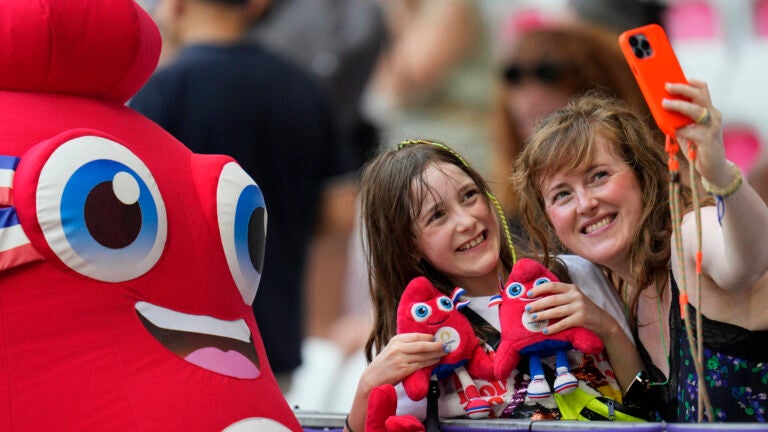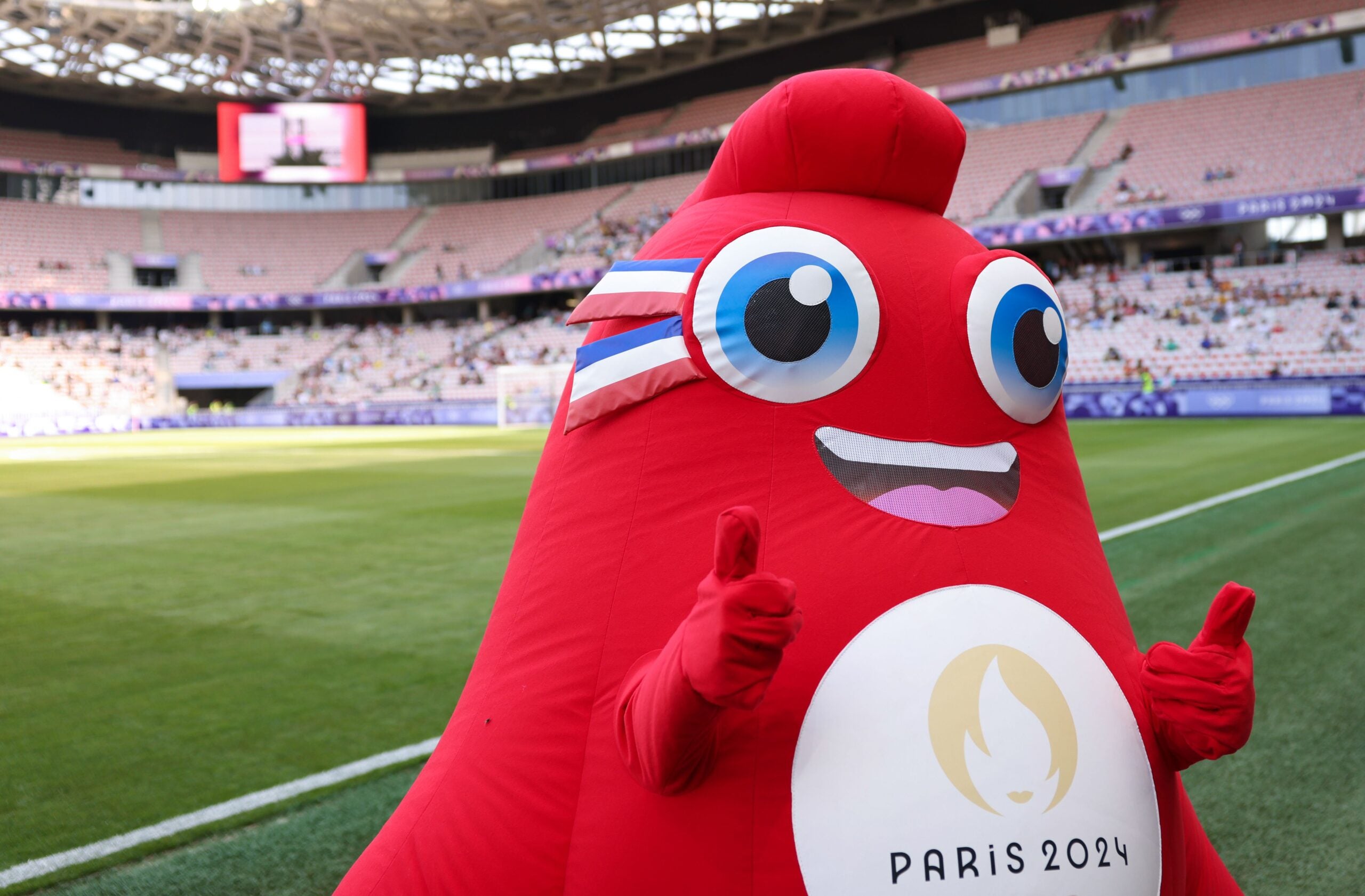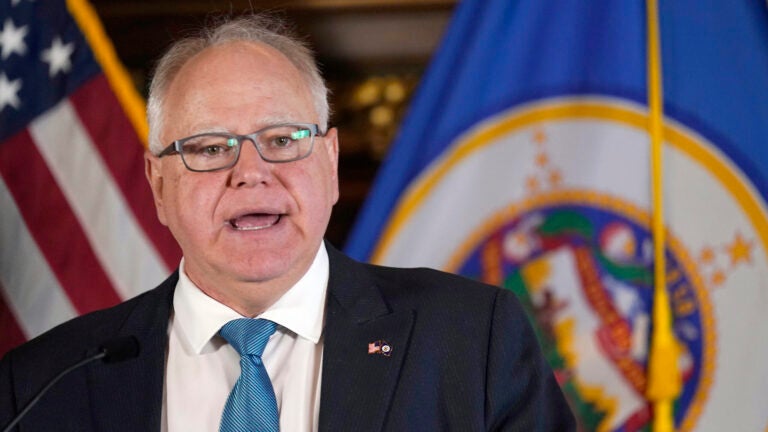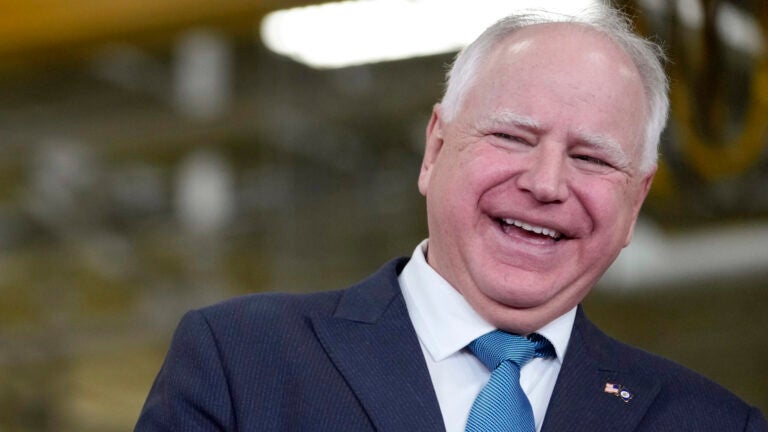Get the latest Boston sports news
Receive updates on your favorite Boston teams, straight from our newsroom to your inbox.

The triangular-shaped benevolent blobs have sloping arms, folded-over foreheads and French flags for eyelashes.
They’re called the “Phryges” (pronounced FREE-jh), and they can be seen all around Paris – hyping up crowds, waved as stuffed plushies or affixed to Olympics merchandise, including water bottles, keychains, candles and bright-red hats.
The hats are meta, because the mascots are hats themselves.
The Phryges are meant to be “two little Phrygian caps” that symbolize the French Republic and freedom, the Paris 2024 Olympics Organizing Committee said in a news release when the Phryges were unveiled in 2022.
One of the blobs, the Olympic Phryge, is meant to be a “fine tactician” and “true mathematician.” Its relative – the Paralympic Phryge, who has a prosthetic leg – is “spontaneous and a bit hotheaded.”
Gigi Burris, a milliner who works out of Manhattan, is thrilled by the fact that a hat was chosen for this year’s Olympic mascot.
“We put on hats at very emotional times in our lives,” she said. “They’re very transformational objects, and they’re often cultural signifiers, even in modern society.”
For Burris, the phryge, with its rich history and unisex application, is a perfect choice for an Olympics held in Paris.
More perfect than, say, a beret? She admits that the beret may have made more sense on the surface, but that the phryge’s history holds more significance. “What it represented was a working-class person working on the Eiffel Tower, a sense of revolution, a sense of independence,” she said.
The soft, conical hat the mascots aremodeled after originated in Phrygia, an ancient Anatolian kingdom that’s now part of Turkey. A similar cap, the pileus, was worn by newly freed enslaved people in ancient Rome, according to Encyclopaedia Britannica, and Phrygian caps have long been an emblem throughout French history: The chapeaus were adopted as red liberty caps during the French Revolution, and the hat is featured on Marianne, a prominent French Republic symbol, in the Romantic-era painting “Liberty Leading the People.”
You can also see the cap all over the U.S. Capitol building and on the heads of Smurfs.

Still, Burris admits that she only recently learned of the phryge’s significance she saw the mascots. Like many people, she didn’t register the red blobs as hats upon first glance.
Left scratching their heads, people are coming up with their own interpretations. On social media, the Phryges are being likened to Doritos, tongues, a red poop emoji and other parts of the human body. One birth worker said she loved how the mascot looked like a female sex organ.
The Phryges call to mind previous Olympics mascots, such as the aggressively cheerful “Adventure Time”-esque Vinicius and Tom from the 2016 Rio Olympics and Paralympics and the abstracted figures of the vaguely Funko Pop-looking Fuwa from the 2008 Olympics in Beijing. The tradition began with the character Shuss at the 1968 Games in Grenoble, France, before Waldi the dachshund became the first official mascot at the 1972 Munich Games.

Chris Carlier, who started documenting Japan’s many (many) mascots in 2016 via the social media accounts Mondo Mascots, is working on a book of his mascot photos.
Carlier praised the originality of the Phryge. “They didn’t go for the obvious design,” he said, although he did recall precedent in a baseball-cap-shaped mascot for a Japanese shipping company.
“The choice to go with the freedom-based hat instead of picking an animal, like a cat or a dog, is interesting. I guess people see them and think, ‘What is that?’”
According to Carlier, this is a feature, not a bug. “There’s a tradition of the Olympic mascots being weird and nobody knowing what they are,” he said. Perhaps he was referring to 2012’s Wenlock, an angry-looking cyclops with a taxi light on his head, who was created from “one of the last drops of steel used to build the Olympic Stadium in London.”
Because of his work with Mondo Mascots, Carlier was invited to the unveiling ceremony for Miraitowa, a big-eared, big-eyed figure sporting a blue and white checkerboard pattern, who was the mascot for the 2020 Games held in Tokyo, where Carlier has lived for more than 10 years. Leftover Miraitowa merch holds a special place in his heart.
“I have a fondness for them because I saw them a lot,” he said of Miraitowa. “Because the Olympics happened without [public]events, the whole of Japan was filled with these cheap merchandise for years after.”
Could the Phryges suffer a similar fate? Sales of Miraitowa merch were particularly sluggish, since the pandemic meant that the Tokyo Olympics were held with barely any spectators.
So how is the Phryge being received in Paris? Photo agencies have snapped several pictures of fans sporting Phryge hats, but our fashion critic, Rachel Tashjian, who has been glued to her TV for days watching the Olympics, can recall seeing only one spectator wearing one.

“The French are very choosy about their chapeaux!” Tashjian explained.
If the Phryges aren’t a hit, it wouldn’t surprise Edie Fake, an artist who became an ersatz expert in anthropomorphized inanimate objects. In the early 2010s, Fake released two zines called “Lil’ Buddies,” featuring his photos of big-eyed cartoon characters around Chicago. (Full disclosure: Fake is a friend of one of the reporters.)
“I’d give them a 6 out of 10,” Fake wrote. “I love that there’s a little bit of a desperate aura in an anthropomorphized Phrygian cap – like we’re running out of things to turn into cartoons,” he elaborated. “I docked them points because their Care Bear bellies with logos on them suck and their expressions look like generic forced-fun.”
Perhaps part of people’s reluctance to embrace the Phryge could be its somewhat … anatomical shape?
Not so for Fake. When this was brought to his attention, his esteem for the Phryge seemed to only grow.
“They do look cheerfully clitoral!” he wrote. “Which hopefully adds to the beauty and meaning of these wonderful caps. Blessed be.”
Receive updates on your favorite Boston teams, straight from our newsroom to your inbox.





Stay up to date with everything Boston. Receive the latest news and breaking updates, straight from our newsroom to your inbox.
Conversation
This discussion has ended. Please join elsewhere on Boston.com